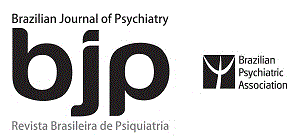Resumo em Português:
O Estudo Epidemiológico dos Transtornos Mentais São Paulo Megacity é um estudo de corte transversal de base populacional avaliando a morbidade psiquiátrica em uma amostra probabilística da população geral residente na Região Metropolitana de São Paulo, com 18 anos ou mais. Respondentes foram selecionados através de um processo probabilístico multiestratificado de domicílios, cobrindo os 39 municípios, sem substituição. Respondentes foram avaliados usando a versão desenvolvida para o Estudo Mundial de Saúde Mental (World Mental Health Survey) do Composite International Diagnostic Interview da Organização Mundial da Saúde, que foi traduzido e adaptado para o Português vigente no Brasil. A coleta de dados ocorreu entre maio/2005 e abril/2007, por entrevistadores treinados. O WMH-CIDI é composto por seções clínicas e não-clínicas, dispostas em duas partes, gerando diagnósticos de acordo com o Manual Diagnóstico e Estatísticos de Doenças Mentais - Quarta Edição e a Classificação Internacional de Doenças - 10ª Revisão. Todos os respondentes receberam os módulos de avaliação de transtornos do humor, de ansiedade, do controle de impulsos, decorrentes do uso de substâncias psicoativas e comportamento suicida, considerados transtornos nucleares, assim como foram coletados dados sociodemográficos. Módulos não-clínicos e clínicos complementares (transtornos obsessivo-compulsivos, estresse pós-traumático, jogo patológico, alimentares, pré-menstruais, neurastenia, sintomas psicóticos e rastreio de personalidade) foram aplicados àqueles que tiveram pelo menos um dos transtornos nucleares e a uma amostra aleatória de 25% dos negativos (2.942 respondentes). Um total de 5.037 indivíduos foi entrevistado, com uma taxa global de resposta de 81,3%. Amostras de saliva foram coletadas de 1.801 respondentes, com extração de DNA e armazenamento para investigação futura.
Resumo em Inglês:
The São Paulo Megacity Mental Health Survey is a population-based cross-sectional survey of psychiatric morbidity, assessing a probabilistic sample of household residents in the São Paulo Metropolitan Area, aged 18 years and over. Respondents were selected from a stratified multistage clustered area probability sample of households, covering all 39 municipalities, without replacement. Respondents were assessed using the World Mental Health Survey version of the World Health Organization Composite International Diagnostic Interview (WMH-CIDI), which was translated and adapted into the Brazilian-Portuguese language. Data was collected between May 2005 and April 2007 by trained lay interviewers. The World Mental Health Survey version of the Composite International Diagnostic Interview comprises clinical and non-clinical sections, arranged as Part I and Part II, producing diagnoses according to the Diagnostic and Statistical Manual of Mental Disorders - Fourth Edition, and the International Classification of Diseases - 10th Revision. Mood, anxiety, impulse-control and substance use disorders, and suicide-related behavior, considered core disorders, as well as socio-demographic information, were assessed in all respondents. Non-clinical modules and non-core clinical sections (obsessive-compulsive disorder, post-traumatic stress disorder, gambling, eating disorders, neurasthenia, pre-menstrual disorders, psychotic symptoms and personality traits) were assessed in a sub-sample (2,942 respondents), composed by all respondents with at least one core disorder and a 25% random sample of those who were non-cases. A total of 5,037 individuals were interviewed, with a global response rate of 81.3%. Saliva samples were collected from 1,801 respondents, with DNA extracted stored pending further investigations.
